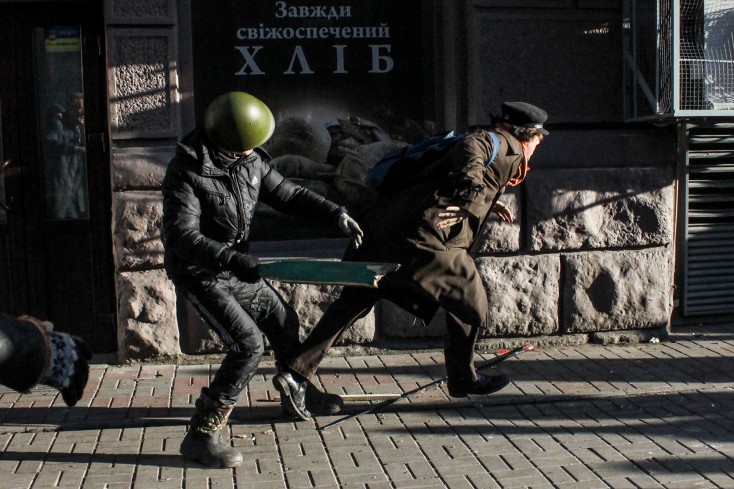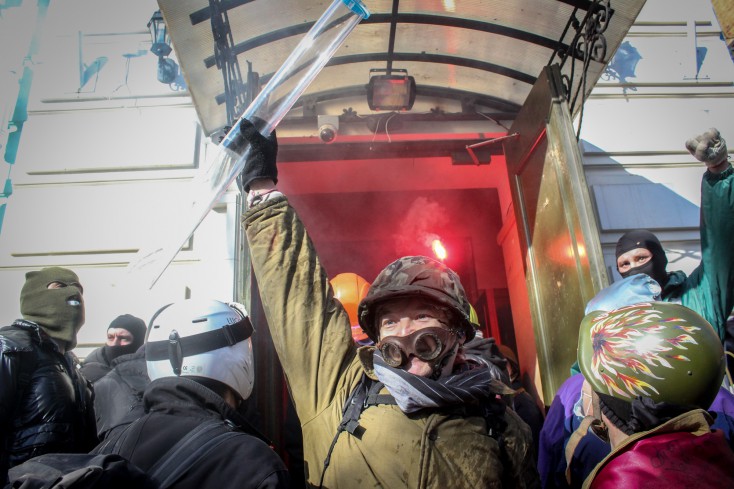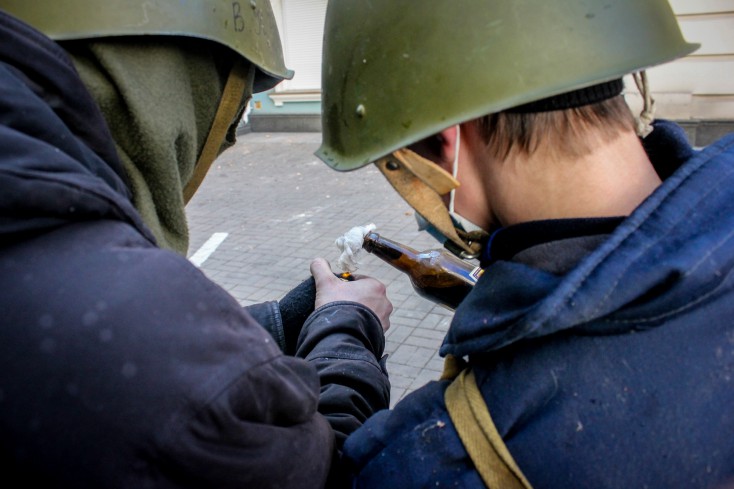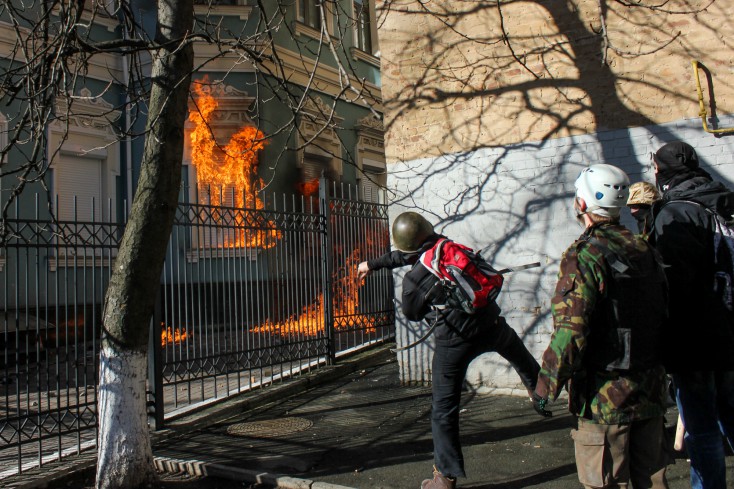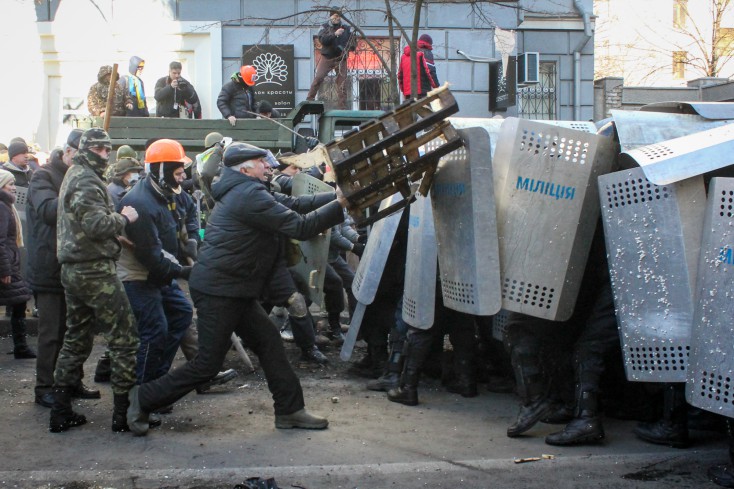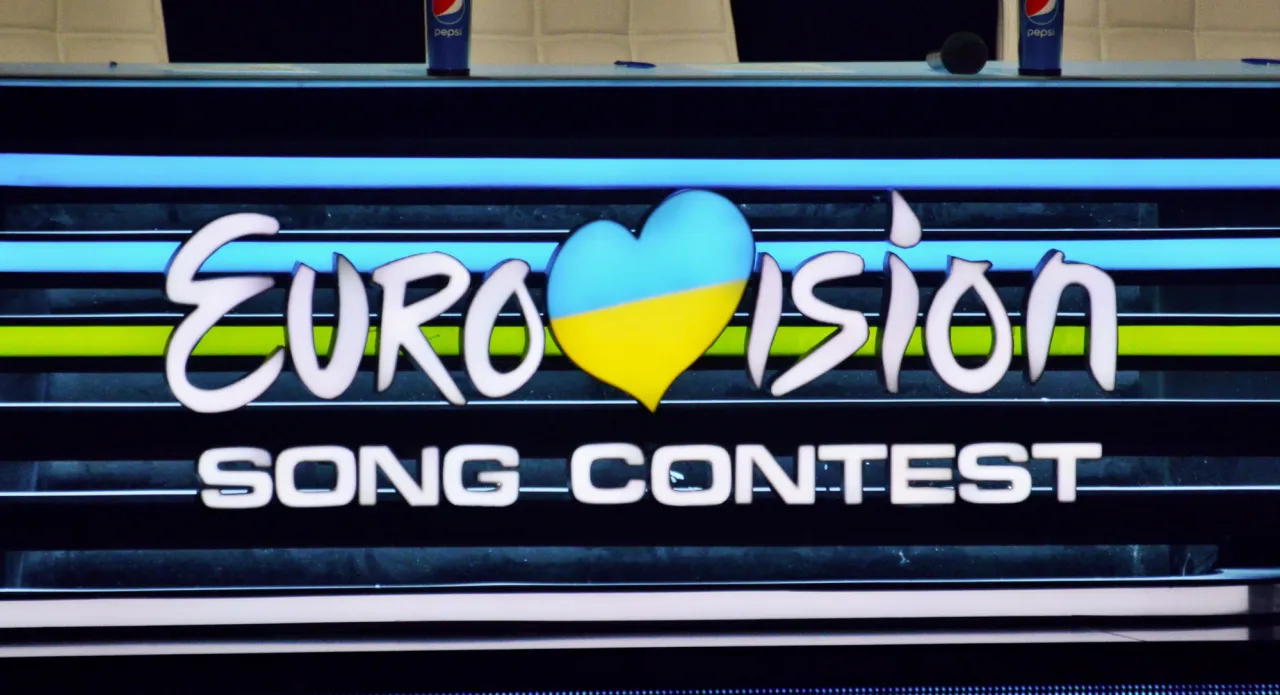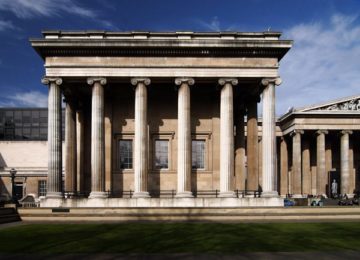Maidan through Photos: Maxim Kudimets, Insider
In our series ‘Maidan through Photos’,’ the photojournalists covering the events in Kyiv share their best photographs and reveal how to stay safe while in the epicenter of the clashes.
Maxim Kudimets, photojournalist of the Insider.
I was photographing the events of February 18 for 24 hours. I witnessed the clashes between the protesters and the riot police at the crossing of Shelkovychna and Instytuska Streets, and saw how the office of the Party of Regions was occupied.
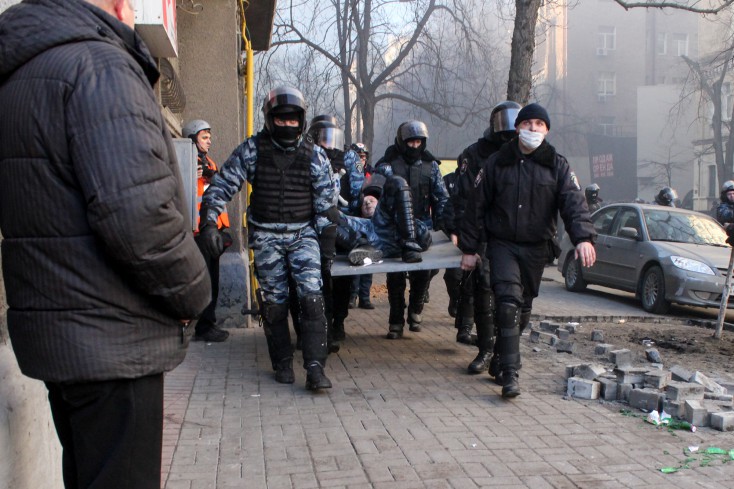
«There were several pretty dangerous moments. And I don’t even mean bombshells exploding under my feet — basically, everyone experienced that all day. I had a conflict situation with the law enforcement officers. When the riot police won back the office of the Party of Regions, which happened around 2:00 pm, I was photographing right from the Berkuts side (note: Berkut — Ukrainian riot police) at Shelkovychna street. I saw a man in civilian clothes distributing ammunition among them, and started taking pictures of the situation. Right away, I was approached by another man, wearing civilian clothes as well, but unlike the first one he was holding a walkie-talkie. He grabbed my camera and demanded I delete my shots, otherwise he would break the camera and beat me as well. There was nothing I could do but delete them».
«Later on several other people from Berkut delivered their own beatings. One of them approached me with a pioneer spade and demanded I show him my ID; he asked why my hands were black and claimed that I was a provocateur using my camera as a disguise. As a result, I was kicked away from the Berkut’s territory. We learned how to distinguish the protesters from ‘tituskhas’ (‘titushka’ — a thug paid by the government and acting under auspices of the police to incite violence, provoke unlawful behaviour among peaceful protesters, and engage in public scuffles and fights). Titushkas usually wear green helmets and white&red ribbons. There was a situation where the activists barricaded themselves in one of the houses in the governmental quarters. The Berkut and titushkas ran there. While I was trying to take a photo, titushkas flourishing bats demanded that I put down my camera. You don’t really feel any fear in such moments, but still you are worried about yourself and your equipment».
«I saw many injured people, but I didn’t really have a choice of whether to help a wounded person or to take a picture. The wounded people were carried away by the activists or medical personnel. Journalists try to keep neutrality. If you try to help, you might be mistaken for a protester. In doing so, you can discredit yourself and the colleagues working by your side. What I try to do is make a photo report: I’m capturing the events just as they happen. In my photos, I’m not trying to deliver a message, or create a certain image of one side or another in the conflict».
Written down by Anya Garienchik.
